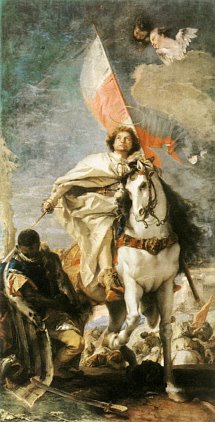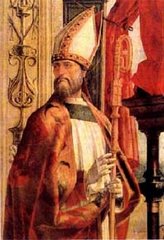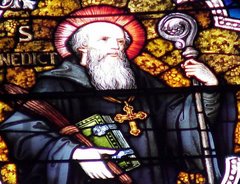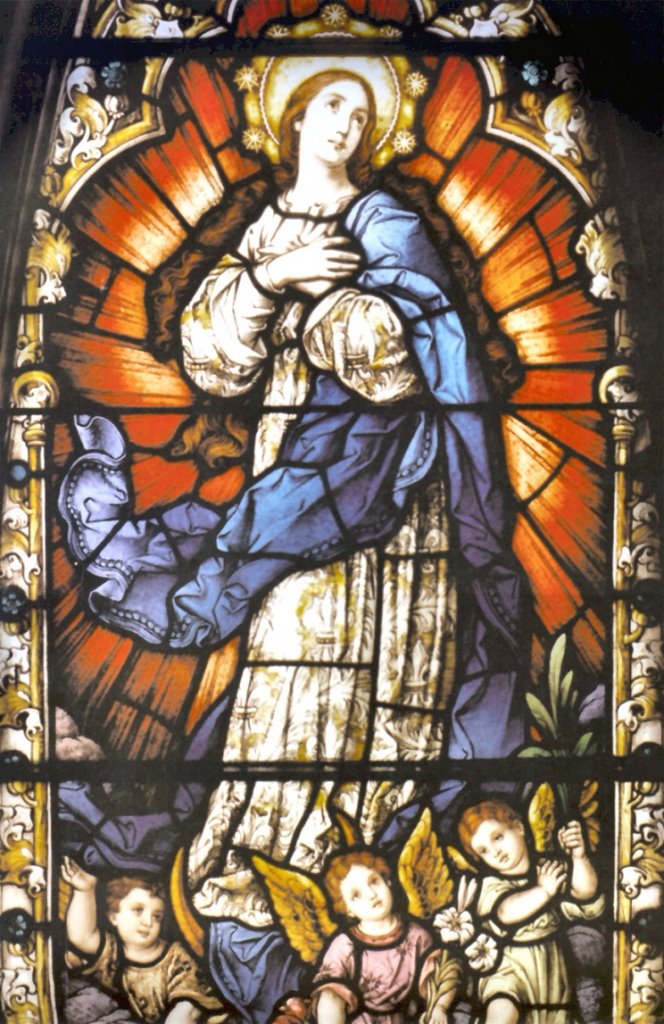
Saint James the Greater - Of the twelve disciples, two were named James. St. James the Greater is the brother of the apostle St. John and son of Zebedee and Mary Salome. He is called "the Greater" because he was called to the apostolate earlier than St. James the Less who led the Christians of Jerusalem until its destruction in 70 AD. During late antiquity a tradition was held that the territory of Spain was entrusted to the evangelization of St. James. On January 2, AD 40, tradition has it that, at Caesaraugusta, on the bank of the Ebro River while preaching the Gospel, the Virgin Mary appeared upon a pillar to James, after which he returned to Judea. The pillar, Nuestra Señora del Pilar, is venerated & preserved within the Basilica of Our Lady of the Pillar, in Zaragoza, Spain. St. James was beheaded by King Herod Agrippa I in AD 44.
In the Martyrology of Usuard of Saint-Germain-des-Prés, completed around 865, in which St. James's feast-day is listed on the 25th of July, is recorded the circumstances of his martyrdom, and continues 'his most holy remains were translated from Jerusalem to Spain and deposited in its uttermost region (in ultimis finibus), they are revered with the most devout veneration (celeberrima veneratione) by the people of those parts'. According to legend his body was taken up by angels, and sailed in a rudderless, unattended boat to Iria Flavia in Spain, where a massive rock enclosed his relics. A Galician monk, during the time of king Alfonso II, announced that a star had led him to a field where he found the remains of the saint. This "field of the star" became the city of Compostela, the basis for the pilgrimage route that began to be established in the 9th century, and the shrine dedicated to James at Santiago de Compostela, which became the most popular pilgrimage site in the Christian world during the Middle Ages. For a long time there were those who doubted the accuracy of these legends until an archaeological discovery at Mérida found an inscribed stone which noted the dedication of a church in honour of St. Mary and the relics of saints St. John the Baptist, St. Stephen, St. Paul, St. John the Evangelist, St. James, St. Julian, Sta Eulalia, St. Tirsus, St. Genesus and Sta Marcella being laid beneath the main altar, the stone is believed to be from the seventh century.
In 844 Ramiro of Castile won over the Muslims at the Battle of Clavijo during the Reconquista. Catholic Spaniards saw St. James riding with them, slaying the enemy moors. Santiago Matamoros became the patron saint of Spain, and an imagery in with the saint saddled upon a horse with sword raised his sword surrounded at his feet with dead and dying Moors and has since been known as "Santiago Matamoros" and was heralded by Catholics as the protector of the faith of Spain.















